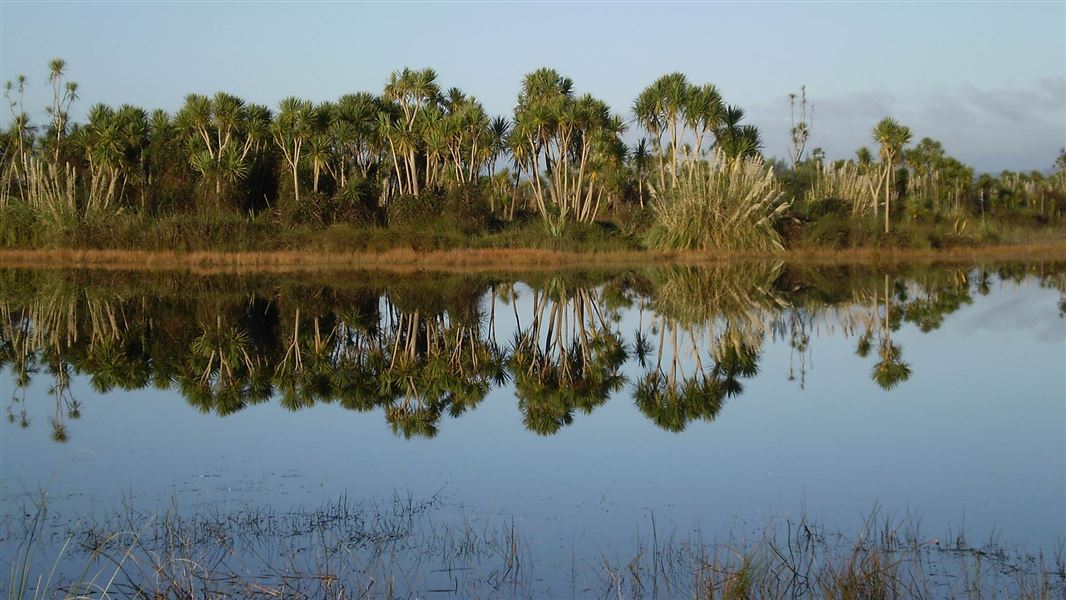Turn off SH2 onto Maketu Road. Turn left onto Te Tumu Road. At the end of the road, turn left again onto Kaituna Road.
At the northern end of Kaituna Road, turn right over the bridge onto Pah Road, and the carpark will be immediately to the right.
- Stay on the formed tracks.
- No mountain bikes.
- No vehicles in the reserve (registered hunters have limited vehicle access before the hunting season).
- Take any rubbish with you.
- Dogs are not permitted outside of the hunting season. Restrictions apply during the season.
- No fires.
- Don't disturb the wildlife.
This lowland swamp has an abundance of cabbage trees/tī kōuka, flax/harakeke and raupō along with kahikatea and swamp maire. The threatened fernbird/mātātā, spotless crake/pūweto and Australasian bittern/matuku are present along with pūkeko, ducks, shags and pied stilts/poaka.
Survival of the plants and animals living in the Kaituna wetland depends on keeping water flowing in and out of the reserve, and controlling introduced weeds and animal pests.
A long-running restoration programme involving local schools has seen more of the wetland returned to its natural state.
Water
The only entry for water is through a controlled gate on the Kaituna River. Water continually leaves the wetland through evaporation and seepage. If the land dries out, weeds and other problems become magnified. The wetland itself is higher than the farmland around it because the ground has dried, and shrunk over time. This makes it even harder to maintain suitable water levels and habitat for wildlife.
Weeds
Invasive plants like parrot's feather, pampas grass, moth plant, blackberry and Japanese honeysuckle are constantly invading the wetland from surrounding areas. These choke and clog the wetland.
Pest animals
Rats, stoats, cats and other mammal predators have to be controlled if bird numbers are to remain strong. The introduced mosquito fish (gambusia) is present in high numbers in the reserve, competing strongly with native fish for both space and food.
Conservation
Protecting, restoring, and managing the remaining wetlands is priority work for the Department of Conservation, other environmental agencies and community conservation groups.
The lower Kaituna River was home to early Māori who built coastal pā along the banks and inside the current reserve area. Food and other resources were richly available.
Flax was milled here in the early 1900s, and then vast areas of the wetland were drained and burnt-off for farmland. The biggest changes occurred during the 1970s and 80s when the Kaituna River was straightened, taking water away from the wetland.
Around this time, the Tauranga Acclimatisation Society bought some land to retain wildlife habitat. This land purchase resulted in the wetland we have today. It became the Lower Kaituna Wildlife Management Reserve in 1985.
DOC Customer Service Centre
| Phone: | 0800 275 362 |
| Email: | taurangainfo@doc.govt.nz |
| Address: | Tauranga Office |
